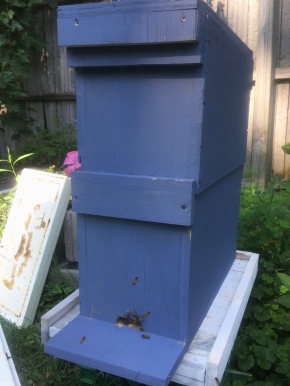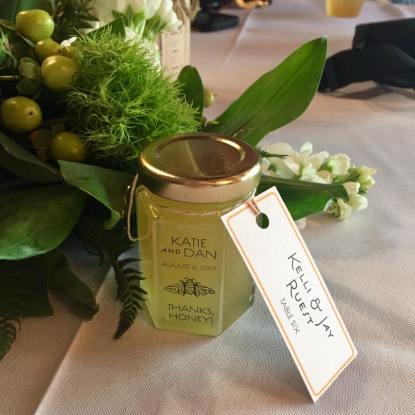Yes, I’m a slacker with blogging!
But that doesn’t mean we quit the most expensive hobby. I’ll give a list of updates and then try to remain consistent throughout this season.
1. This has been a very successful year with honey and lip balm sales. We’ve really gotten to know more of our neighborhood, which is awesome!
2. The lip balm container problem may have been resolved.
3. Mighty Mite Thermal Treatment is our current attempted method for dealing with mites.
4. We went into winter with 6 hives and entered spring with 3.
5. We did another on-site presentation with some of our neighborhood children.
6. We attended the annual Geneva Bee Conference.
7. Two more package bees were purchased and we briefly had 5 hives.
8. One of our hives that swarmed (quite an event that I’ll write about another day) actually absconded.
9. With 4 hives left, another one swarmed- much too high to catch.
10. For the first time, we purchased a queen.
11. With 10 queen cells brewing (as potential replacements for that last swarm) several hive splits were attempted.
12. More than anything, we really want to figure out queen rearing. $$$
13. We’ve decided to enroll in the eCornell Master Beekeeper program.
Here’s a little swarm video:
Interesting Fact: Our hive that absconded? That was the last of the mean-queen descendants, so we are glad they left.














 We “rescued” them by having one of us pound the fence on the wooden side, while the other swept the bees into a box on the wired side.
We “rescued” them by having one of us pound the fence on the wooden side, while the other swept the bees into a box on the wired side.


 As a first time swarm catcher, he asked for some advice, but ultimately figured it out on his own. The bees were attached to a branch, so the branch had to be cut off. The girls were placed into a cardboard nuc box, and then we began the fun process of installing them into a deep super.
As a first time swarm catcher, he asked for some advice, but ultimately figured it out on his own. The bees were attached to a branch, so the branch had to be cut off. The girls were placed into a cardboard nuc box, and then we began the fun process of installing them into a deep super. We provided them with some food, a few empty frames, and hoped for the best.
We provided them with some food, a few empty frames, and hoped for the best.